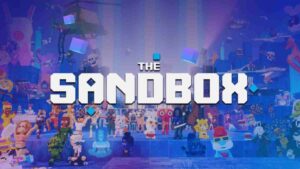Requisition VR is heading to Meta Quest, but not as the game PC players might remember. Instead of a direct port, the developers are rebuilding the experience almost entirely, aiming for a version that fits the limitations and expectations of standalone VR headsets.
This shift isn’t just about optimization. It reflects a change in design philosophy, moving away from a physics-driven sandbox toward a more focused, survival-oriented structure that can actually run smoothly on Quest hardware.
From physics sandbox to structured survival
The original PC version of Requisition VR leaned into chaos. It was all about grabbing whatever was nearby and turning it into a weapon pipes, furniture, electronics, anything. The physics system was ambitious but also heavy, leading to performance issues and sometimes unpredictable gameplay.
The Quest version dials that back. Instead of full physics on every object, the game now focuses on a core loop of crafting, defense, and controlled exploration. You still fight zombies and build barricades, but with fewer interactive props and more refined mechanics.
This redesign brings a shift in tone too. What used to feel like a VR version of “Dead Rising meets Garry’s Mod” is now closer to a streamlined survival experience with clear objectives and a tighter gameplay loop.
Visual style and performance adjusted for standalone VR
The move to Meta Quest brings the usual trade-offs in graphics. Lighting is flatter, textures are simplified, and environments are less cluttered. But the core visual identity run-down suburban homes, improvised weapons, eerie lighting still holds up within the constraints.
More importantly, the frame rate is now stable, and controls feel better suited for longer sessions. The team seems to have prioritized smooth interaction over spectacle, which makes sense for a platform where immersion often depends on consistency more than fidelity.That said, some of the original’s charm like throwing a microwave at a zombie’s head doesn’t fully carry over. It’s a cleaner build, but also a less eccentric one.
Redesign shows a pivot in VR survival game trends
The shift in Requisition VR echoes a larger trend in standalone VR: less sandbox sprawl, more defined systems. As developers port PC VR titles to Quest, many are realizing that open-ended mechanics don’t always translate well without high-end hardware and complex inputs.
Instead, we’re seeing more games narrow their focus. Requisition VR joins that list, cutting back on improvisation to offer a smoother and more goal-driven experience. It’s not necessarily better or worse just built for a different context.
For those who played the original and enjoyed the janky, chaotic creativity, this version might feel restrained. But for Meta Quest users looking for solid performance and clear progression, the redesign makes practical sense. It’s still about surviving a zombie outbreak just now with more structure and fewer frying pans.
Virtual Reality Explorer & Game Reviewer
Always the first to plug in. VRSCOUT dives head-first into the most immersive VR worlds, analyzing mechanics, comfort, innovation, and that elusive “presence” factor. If he says it’s worth it, it probably is.




